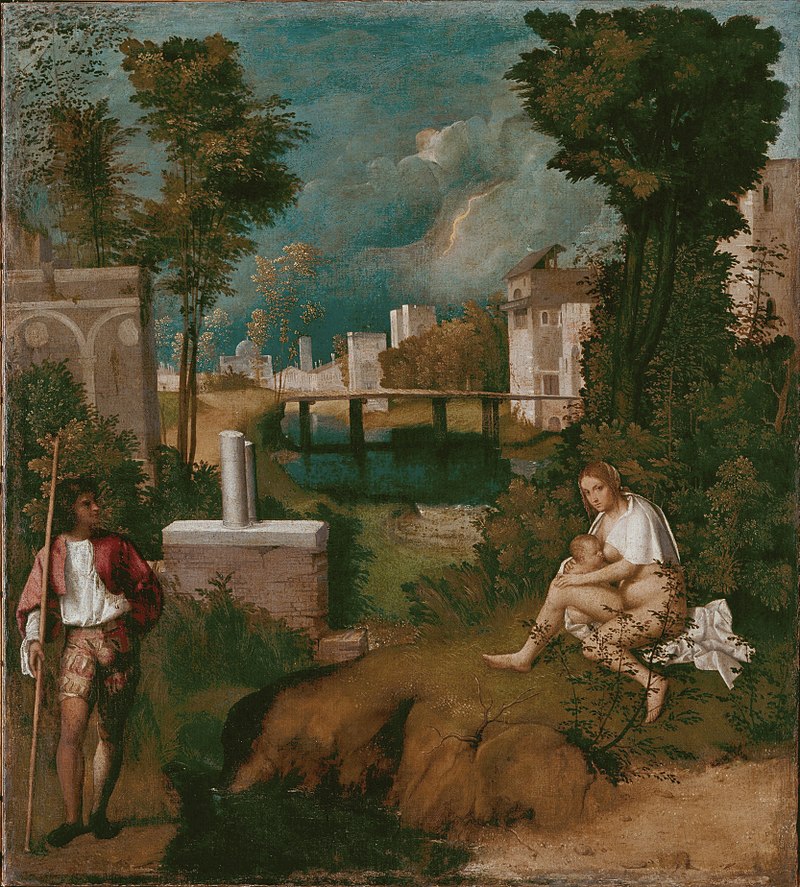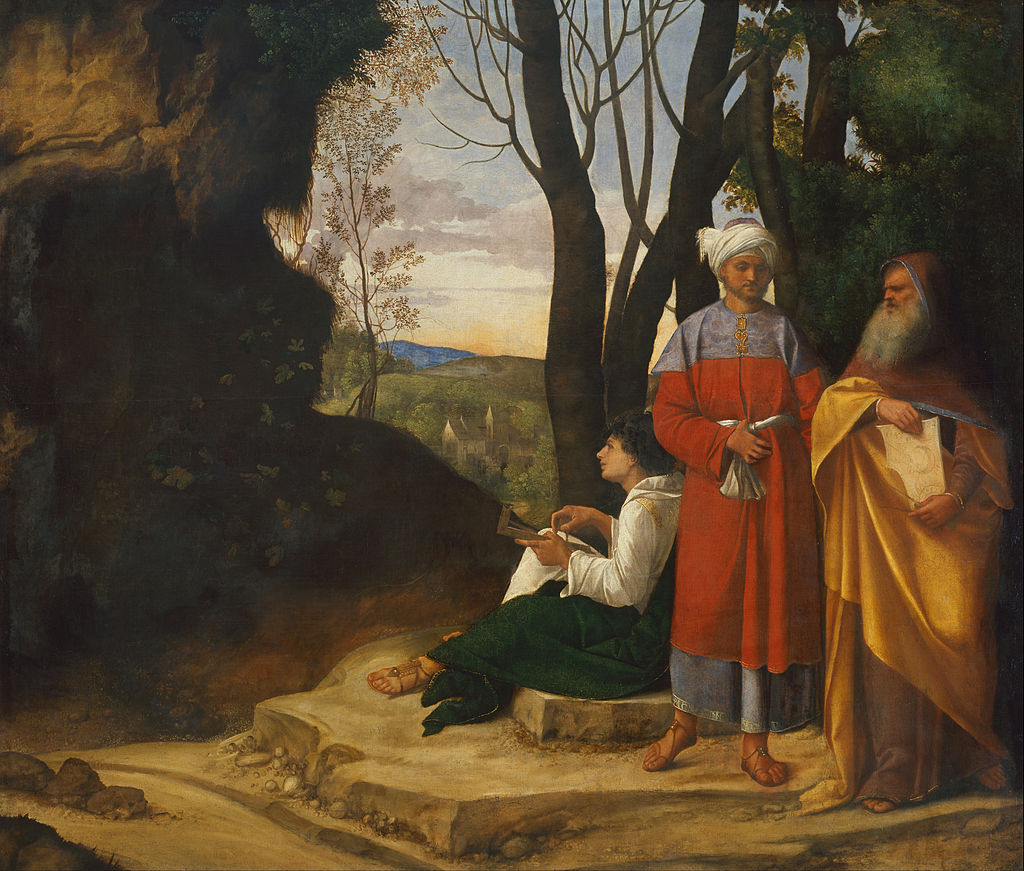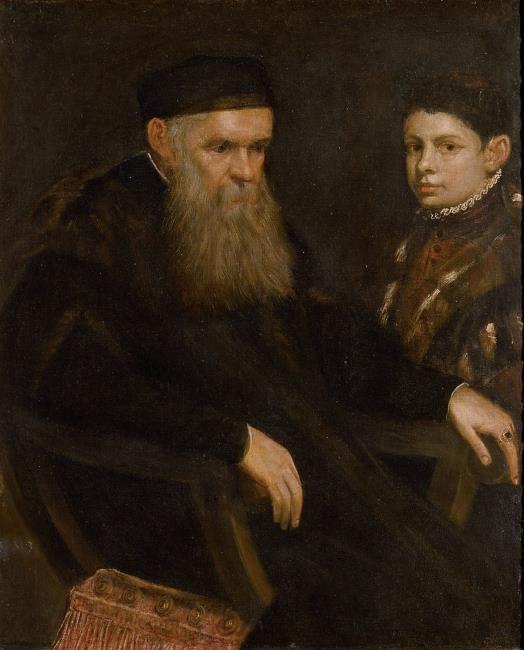5 Things You Need to Know About Cupid
Cupid is the ancient Roman god of love and the counterpart to the Greek god Eros. It’s him who inspires us to fall in love, write love songs...
Valeria Kumekina 14 June 2024
The Venetian School refers to the painters of the Venetian Renaissance. It developed in Venice in the late 15th century and lasted until around 1580. The city prospered during this time, with booming trade helping to create sound financial conditions. Consequently, this led to the creation of thriving artistic and cultural movements within the city.
As the economy grew, aristocratic and merchant families throughout the Republic became more wealthy. And what better way for them to spend their money than by filling the walls of their houses with paintings? As the demand for art grew, more painters emerged and the Venetian Renaissance was born.
The painters of the Venetian Renaissance sought to blend classical painting with new forms and techniques. They used more color and focused heavily on detail and embellishment. This captured the hedonism of the time, with society relishing in its newfound riches. Indeed, their work reflected the joy, happiness and decadence that was alive and well during this epoch.
Let’s explore the painters who contributed to this shift in technique and helped create the Venetian Renaissance.
There are two painters credited with founding the Venetian School: Giovanni Bellini (1430-1516) and his brother Gentile. Born into a family of painters, their father was Jacopo Bellini (1400-1470). Jacopo introduced many of the techniques of the Florentine Renaissance to Venice during his career. He inspired his two sons and taught them to draw, paint and use artistic tools. For Giovanni Bellini in particular, his brother-in-law, Andrea Mantegna, was also highly influential on his religious works. For example, we can see Mantegna’s mastery shining through in Giovanni’s Bellini early work, Pietà. This painting beautifully captures the grief and mourning of the Virgin Mary and John who are holding Jesus.

Giovanni Bellini went on to revolutionize Venetian painting, moving from classical trends to a more colorful and sensuous style. He began working with oil on canvas and was celebrated for his ability to capture natural light in painting. We can see this skill in The Agony in The Garden. The work portrays Christ kneeling on the Mount of Olives in prayer. His disciples Peter, James and John are sleeping near him. In addition to religious oil paintings, Giovanni is renowned for altarpieces, frescoes, portraits and landscapes.

Keen to pass on his artistic skills, he instructed many of the painters of the Venetian School’s next generation. For instance, he taught Giorgione, Titian and Palma Vecchio, amongst others. His pupil Titian notably finished off Giovanni’s Bellini final work, The Feast of the Gods. This work depicts a scene from Ovid’s Fasti. It shows the gods, which include Jupiter, Neptune, and Apollo, in the woods, eating and drinking, attended by nymphs and satyrs. Undoubtedly, this is one of his greatest works. It captures his love for color which he used to display joy and merriment.

Like his brother Giovanni, Gentile Bellini (1429-1507) produced a number of highly influential works which contributed greatly to the Venetian Renaissance. Jacopo Bellini, his father, had the same influence on Gentile, who eventually ran the Bellini family workshop. He specialized mostly in portraits, but also turned his attention to painting large subjects with multitudes of figures. We can see the latter in his earliest signed work, The Blessed Lorenzo Giustinian.

His skills were highly regarded across Venice, and in 1474 he became the official portraitist for the Doges of Venice. His portraits filled the walls of the Doge’s Palace. Although, in 1577 a tragic fire in the palace destroyed many of these paintings. From the surviving portraits, his most notable was the Portrait of Giovanni Mocenigo.

In 1479, Gentile Bellini set off for Constantinople, where he became Sultan Mehmed II’s official court artist. His role in this new land was not only to be a painter, but also a cultural ambassador for Venice. This was very important for Mehmed II, who took interest in the art and culture of Italy. He asked many Italian artists to portray him, yet Gentile’s portrait, completed in 1480, became his favorite. Like his brother, his use of color, so typical of the Venetian School, shines through.

Giorgione (1478-1510) is one of the most mysterious Venetian painters, there is little known of his life. Born in Castelfranco, Veneto in 1478, art historians believe that he moved to Venice at a young age. It was here that he first met Giovanni Bellini and began under his instruction.
Although we do not know much about him, his work is among some of the best that came out of the Venetian School. In his 20s, Giorgione was chosen to paint a portrait of the Doge Agostino Barbarigo. Later, he produced other works for the Doge’s Palace. Yet, like Gentile’s masterpieces, the palace fire destroyed many of these paintings.
Above all, he showed a talent for working with altarpieces in the church of his hometown in 1504. Following this, he was commissioned, along with other artists, to paint the frescoes on the exterior of the newly rebuilt Fondaco dei Tedeschi in Venice.

Although very little of his work still survives, there are a handful of oil paintings accredited to him. Perhaps his most famous is The Tempest, which some call the first landscape in the history of Western painting. In this work, he leaves the viewer to determine its meaning. As a result, there have been a number of interpretations over the years. Another masterpiece, Sleeping Venus, demonstrates his ability to use landscape to add drama and divinity to his subjects.

Finally, one of his last paintings, The Three Philosophers, depicts one young, one middle-aged, and one old philosopher standing near a dark cave. Following the Venetian School’s style, all his paintings are full of color and depth, with a dreamy aura to them. This is something for which he is still celebrated today. Unfortunately, Giorgione died in his 30s from the plague which was sweeping across Europe at that time.

Tiziano Vecelli (1489-1576), or Titian, is widely considered one of the most important and influential painters of the Venetian Renaissance. Principally, he produced portraits, landscapes, and mythological and religious paintings. Above all, he followed the Venetian School’s dedication to using vivid color in his work.

A pupil of Giovanni Bellini, he began his artistic training at the age of 12. He was naturally gifted and flourished in his work from the start. After a word got around of his talents, he began receiving commissions from kings and governors from far and wide. One of his first major commissions was to paint an altarpiece for the Basilica dei Frari in Venice. This piece, known as Assumption of the Virgin, is huge in scale. Chiefly, it demonstrates Titian’s love of a bold use of color. Following this, he was no longer an apprentice, but a painter of the Venetian School in his own right.

Another triumph was a series of mythological paintings commissioned by the Duke of Ferrara, for a private room in the Ducal Palace. Among them is Bacchus and Ariadne (1520-1523), which many consider to be his greatest work.

Inspired by Giorgione’s Sleeping Venus, Titian created Venus of Urbino. Painted for the Duke of Urbino’s wife, the work exquisitely illustrates the sensual and seductive Roman goddess of love. Finally, he worked in his later years for Philip II of Spain and as a portrait painter. For Phillip II, he produced a series of mythological paintings. One of those is The Rape of Europa, which shows his commitment to the Venetian School’s style and form, long into his final years.

Titian, Paolo Veronese (1528-1588) and Jacopo Tintoretto were the three musketeers of the late 16th century Venetian Renaissance. As a young aspiring artist, Veronese was an apprentice of Antonio Badile and later Giovanni Francesco Cavoto. In 1553 he moved to Venice to work professionally. His first major state commission was to create frescoes in the Consiglio dei Dieci (the Hall of the Council of Ten) and a room in the Doge’s Palace. His panel of Jupiter Expelling the Vices in the former was an impressive work for the young painter. Consequently, it put him on the map and cemented his reputation as a member of the Venetian School.

Later, he became famous for his very large paintings of religious and mythological subjects. For example, the Benedictine monks commissioned his work The Wedding Feast at Cana for the San Giorgio Maggiore Monastery. Covering 66 square meters, it tells the religious story of the Marriage at Cana where Jesus converted water to wine.

Finally, another of his major works is The Feast in the House of Levi. He painted this for a wall in the Basilica di Santi Giovanni e Paolo, Venice. The Last Supper painting, includes German soldiers, dwarves, and animals. This hugely impressive piece demonstrates Veronese’s commitment to the Venetian School. Furthermore, it shows his adoration for intense and luminous colors.

Another contribution to the Venetian school came from Jacopo Tintoretto (1518-1594) and his daughter, Tintoretta. Born Jacopo Robusti, Tintoretto gained his nickname from his father who was a dyer, or tintore – Tintoretto means “little dyer”. He lived and worked for the majority of his life in Venice. Yet, art historians know very little about his professional training. There are accounts that state he became a pupil of Titian for a short time.
One of Tintoretto’s first important works was Miracle of the Slave for the Scuola di San Rocco. Primarily, it presented the young painter with an opportunity to establish himself as a major artist within the Venetian School. The work represents the story of a slave who was punished but saved by the intervention of God. Above all, his peers celebrated this work for the bold use of color and vigor.

In 1564, he completed further paintings for San Rocco, one of which was St Mark’s Body Brought to Venice. The painting was a huge success due to its deep perspective background lines. He chose darker colors to represent the near subjects, and lighter, almost transparent colors for the background subjects. Notably, Tintoretto portrayed himself in the work as the bearded man next to the camel.

After Titian died, Tintoretto, alongside Veronese, became one of the leading painters in Venice. Above all, we can attribute the high point of his career to his work for the Doge. He commissioned Tintoretto to create Il Paradiso for the Doge’s Palace. Luckily, it survived the palace fire and is the largest painting on canvas in the world. Upon viewing this work, art critic John Ruskin commented,
I have no hesitation in asserting this picture to be by far the most precious work of art of any kind whatsoever, now existing in the world.
John Ruskin, quoted in Il Paradiso.

Tintoretta, born Marietta Robusti (1555-1590), was one of Venice’s leading female artists of the time. Women are often left out of any list of influential painters of the Venetian Renaissance. However, Tintoretta made as equally valuable a contribution as her male counterparts. As was the case with most women, she could not receive formal training. Therefore, the only way Tintoretta could develop her craft was by learning from her brothers and father.
After serving as an apprentice in her father’s studio, she began receiving invitations to be a court painter from notable figures, including Emperor Maximillian and King Philip II of Spain. However, her father did not want her to leave Venice, and so refused the offers on her behalf.

Instead, she painted several commissions for members of Venetian society, gaining herself a solid reputation as a portraitist. Unfortunately, the only known work to be attributed to Tintoretta was her own Self-Portrait. In this work, she poses in front of a harpsichord, holding a text that historians have identified as a musical work by French composer Philippe Verdelot, Madonna per voi ardo. The opening lines are “My Lady, I burn with love for you and you do not believe it.” Above all, this proposes that she created her self-portrait with a man in mind – most probably her husband.

Another work that many have accredited to Tintoretta is Old Man and a Boy. Originally accredited to her brother, in 1920 art historians revealed that it was in fact her work. Furthermore, some have also accredited the Portrait of Ottavio Strada to her.

DailyArt Magazine needs your support. Every contribution, however big or small, is very valuable for our future. Thanks to it, we will be able to sustain and grow the Magazine. Thank you for your help!